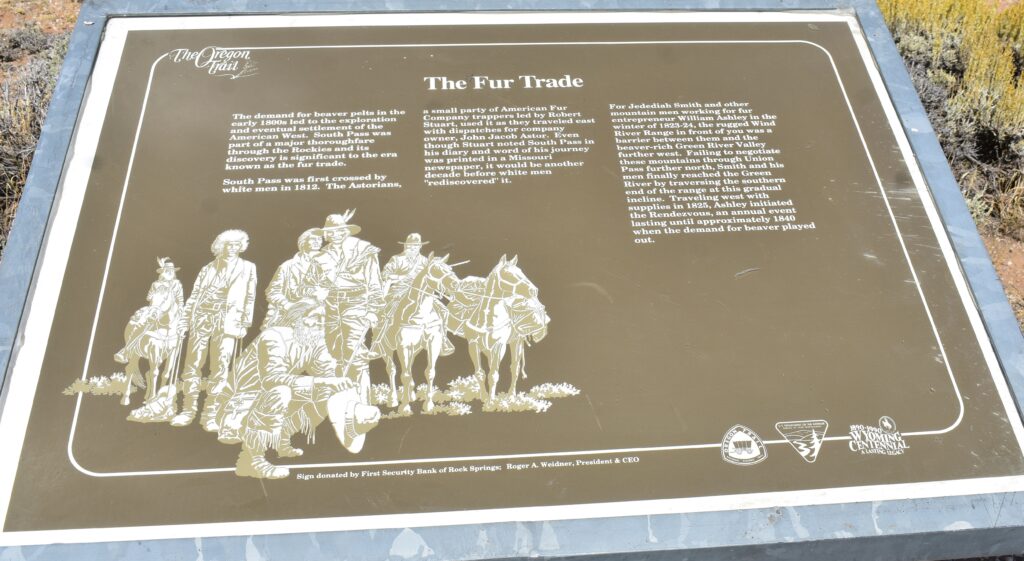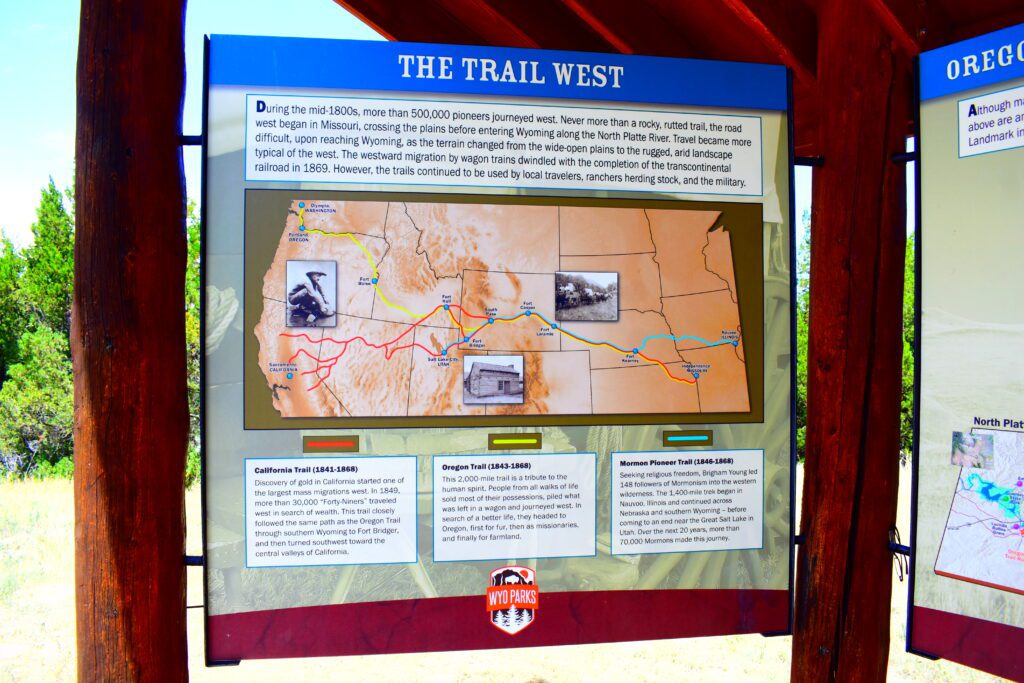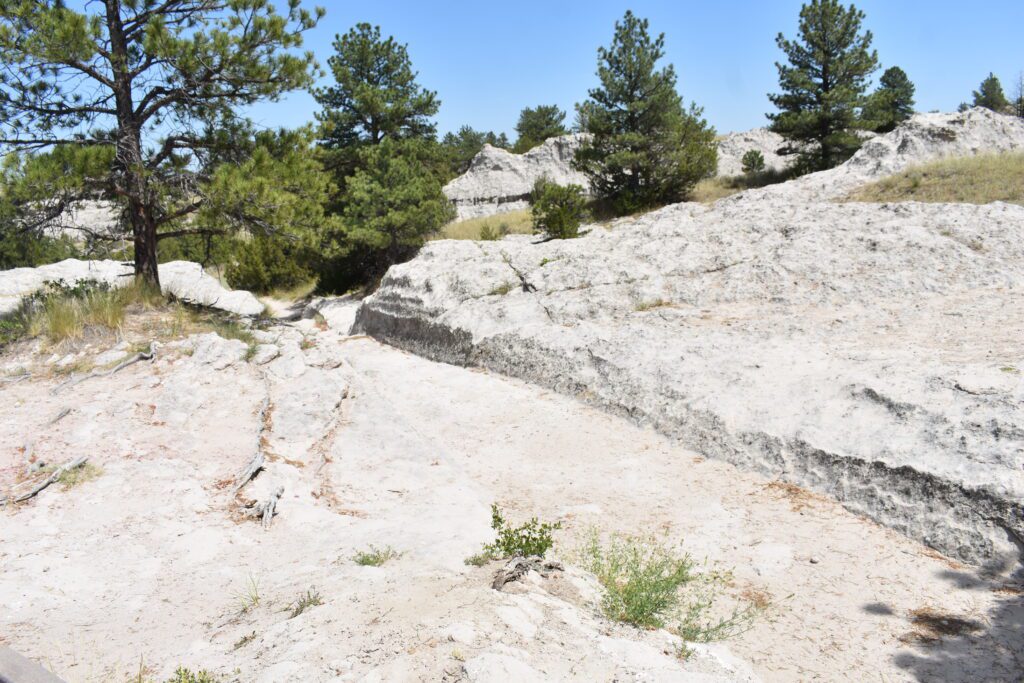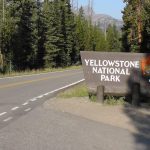News – Sheridan Media

The Oregon Trail had a huge impact on Wyoming’s history. In last weeks column we saw some of the historic facets of the Trail, probably the first great highway across half of the United States. This column will explore more interesting facts about the historic trail.
The Wyoming Student, March 22, 1916 – Oregon Trail Main Feature – Wyoming Pageant to be Undertaken by University Should Picture Those Who Passed Through. – When we present a pageant, it is delineating pages of history, one by one, which have been lived and enacted by individuals, groups, communities, and nations. The most wonderful opportunity for a pageant is in a country where the stages of development are distinct and stand out in separate significance. The development of the West is particularly adapted for pageant festivals. Wyoming is singularly a commonwealth that could be vividly and intellectually brought before the people in the form of a pageant. Wyoming was the great broad highway to the West long before the man of the family decided to unhitch his oxen and say, “Here I rest, give my life if maybe, and build my home.”
There were so many visible attractions to the land lying in the territory west of Wyoming, particularly in the Oregon country and In California, that for many years, even decades, the land in Wyoming was overlooked as a possible place for permanent residence.

There were many phases and many economic conditions in Wyoming in the way of wild game and the beaver with their precious skins that attracted a certain class of people to this country, which through the pageant we may have given to us that would make us appreciative of the hazardous and perilous adventures of the early frontiersmen. Along the Oregon Trail, that great highway which traverses the central part of our state, entering by the route of the Platte and Sweetwater Rivers, through the historic South Pass, and over into Utah and Idaho by the tributaries of the waters that feed the Pacific Ocean, we find enacted every stage of early development in Wyoming. I suppose it would be impossible to represent the wild animal roaming back and forth on the banks of these rivers, but they were the real surveyors, the preliminary engineers of a road that is yet distinctly visible.
Following the animals which had beaten a path, we have the Indians moving east and west on this road when they were going on their annual migrations from less favorable to more inviting fields for hunting, or as climatic conditions drove them from place to place. Then we have the solitary fur trapper in Wyoming, perhaps John Colter being the first one to come into Wyoming and who discovered Yellowstone Park.
It is true he did not come as far south probably as the Oregon Trail, or he would have to be a part of the pageant, as would Manuel Lisa, who came well down into the central part of the state by Tongue, Powder, and Big Horn Rivers. Then we have the first organized whiteman’s expedition across Wyoming with the Astoria men on their way to the Pacific Coast and back again over the Oregon Trail to St. Louis.

Then come William Ashley, who helped make the trail more visible, his partners Jedediah Smith and furmen when South Pass was discovered. From this time on the Oregon Trail was generally used by those who first came into Wyoming. These are all picturesque men with characteristic garb and a certain retinue which follows in the wake of an organized party. Bonneville, with his military paraphernalia would make a brilliant part of the pageant, and Jim Brldger, Sublette and Jackson, and Fitzpatrick.
Then come the lonely missionaries who were determined to bring a bit of civilization to the Indians and to the whiteman in the mountains and on the plains. Here we have Whitman, Spalding, and Parkor, DeSmet and the Mormons. This was the beginning of the white woman in her desire to build a home in the West, for Whitman and Spalding were accompanied by their brides. This feature is a prominent one in the drama, as it was the beginning of permanent residence.
The pack horse, the saddle horse, the crudest kind of two-wheeled vehicle, the prairie schooner, and the wagon are now ready to make their bow in the pageant. With the home makers come the Indian with a determination to force the White Man back to the Mississippi. Here we have a question of occupation, while terrible in its reality, might be made a part of a very thrilling panorama.
Then of necessity come the soldier, more often cavalry with a fine breed of horses, military trappings, and the musical bugle. The miner having had a taste of gold on the fringe of civilization is now pushing into the interior and taking out the precious metal from the stream, the mountain side, and the valley.
Here we have the typical and ideal frontier life. This easily can be followed by the railroad, the hardships and seeming impossibilities of construction of a transcontinental rail road, the Union Pacific. The last stage has not been enacted, but might be in the pageant, an aeroplane flight. There is no difficulty about an abundance of material for a pageant of Wyoming. There only problem would be for lack of space, time, and material, how to condense this marvelous drama of the West into a one-day entertainment.
The next story is about Ezra Meeker, who had first traveled the Oregon Trail in 1862, and then revisited the trail with a yoke of oxen when he was in his 80s. He made the trek from Tacoma, Washington to Washington, D.C., to ask Congress of appropriate funds for marking the historic trail.
This from The Laramie Daily Boomerang, July 9, 1910 – Ezra Meeker passed within a few miles of Laramie two or three days since along the old Oregon trail which lies across the plains west and north of the Laramie River a little south of here. He has reached Cheyenne and is Stopping over there to enlist what aid he can in marking the old trail which will soon be a thing of the past unless it is marked, with so much colonization going on in its vicinity.
The following article appeared in the Cheyenne Leader: While this western country today is not infested by Indians as it was a half century back,, it requires as much courage, in a man of eighty years of age, to cross the plains from coast to coast in an ox wagon today as it did half a century ago when, in the confidence of his youth, the same man crossed them in the same kind of a wagon. This courage is prominently displayed by Ezra Meeker, who arrived in Cheyenne last night.
He is en-route from his home nine miles from Tacoma, Washington, to Washington, D.C., where he will again make and effort to have Congress pass the pending appropriations bill for paying the expense of marking the old Oregon trail. This trail, with a handful of companions as brave as himself, he fighting Indians nearly every day of the journey. A picturesque sight are this old Indian fighter and his prairie schooner drawn by a yoke of oxen, traveling in the same route that the pioneers followed from the east to the west in the year of 1862.
His flowing white hair adds a frontier aspect to his appearance that is very pleasing indeed. Ezra Meeker made the same trip in the year 1906, and reached Washington while congress was in session the following year. He saw President Roosevelt, was encouraged by him and advised to go before congress and petition that body for appropriation. The matter was referred to a committee who reported favorably on it and as soon as congress is assured that other necessary arrangement will be made by the populace the bill will will go through.

This feature is the reason for the aged pioneer’s trip in an ox wagon across the plains by the same route. He is interesting the people along the route and is meeting with success. Yesterday he called on Govenor Brooks and Surveyor General Hanson and was given encouragement by them.
The ox team last night was left outside the city limits but will today be brought into Cheyenne and the old fellow will go into camp on the vacant lot across the street from the post office where he will meet all visitors.
A more interesting personage could not be found, as Mr. Meeker has a vast fun of interesting anecdotes relating to this and other sections of the west of sixty years ago.

In speaking of the Oregon trail, Mr. Meeker said: “Made possible by the discovery in 1824 of that wonderful gap in the Rocky Mountains known as the South Pass, the Oregon trail did not become a national highway until Rooneyville and Wyeth in 1832 transversed the whole length from the Missouri river to the tide waters of the Pacific.

The missionaries, trappers, and traderssoon wore a visible wagon track to the trader’s rendezvous on the Green River and beyond to Fort Hall on the upper reaches of the Snake River, but not until the greater immigration of the Oregon homeseekers a thousand strong with their wagon train in 1843 passed over to the Pacific did the Oregon Trail become in fact a great national highway.
Each year there after wagon trains passed over the whole route to the Oregon country in varying numbers, wearing the track deeper and deeper, until finally the greater exodus of 1852, when a column 50,000 strong moved out from the Missouri river and lined the trail with the dead, 5.000 or more, in number for that one year alone. Meanwhile the Mormon migration had followed in the track of the Oregon pioneers for fully 1000 miles to the great bend In the Bear river. The California movement in1849 and later also followed inthat same track Bear river or to Fort Hall where the California trail diverged, as did the Mormon track also, and bore of to the southwest, while the Oregon trail kept steadily on for the northwest.
“The trail had indeed become the real national highway 2000 mile long. Fully 300,000 people crossed over what might be termed the eastern section before the advent of the Union Pacific railroad, which diverted the later traffic and the trail became a solitude, but not until fully 5,000,00 head of stock passed over, it, either east or west, and had worn the trail so deep that the track in places might readily he mistaken for great railroad cuts.

“The object of marking this historic trail the same as the marking of any other great battlefield of history. The winners of the farther west that passed over this trail fought a strenuous battle, and if the trail become a battlefield from one and to the other.Sioux dead to the mile upon a stretch of 400 miles up the Platte tells the ghastly story. Nor was this all. The fallen could be counted in groupsof 50s and 70s beyond where this count was made. History does not record the battlefield of greater carnage that of the Oregon trail, neither is there any record of so long a trail or of one that wrought such historic changes.
The joint-occupancy treaties with Great Britain left the settlement of ihe Oregon boundary virtually to be determined by a race as to whom should as home builders, occupy that country first. The Hudson Bay company began bringing in settlers from the Red River of the North, and not until the opening of the Oregon trail for wagon to the Oregon country, with their precious freight of home builders, was the the question settled as to the preponderance of the American settlement over that fostered by the Hudson Bay Company immediately this was accomplished, an American provincial government was formed and the British rule ended.
“No more heroic act is recorded in story than this of the Oregon pioneers holding firmly the disputed territory while many of our statesmen were decrying the Oregon country and preparing the way for a shameful surrender. The American people owe a deep debt of gratitude to the intrepid pioneers, and their trail should be marked and the memory of it preserved religiously and treat landmark in the history of the nation, not only that future generations may know the great struggle to advance our boundary to the Pacific, but likewise to keep alive that patriot zeal so helpful in the perpetuation of our government.
In the measure we keep the memories of the heroic past fresh in the minds of our people, patriotic fervor is justified, the flag more reverend, and our national stability better assured.
Today, as we see here, the historic Oregon Trail is well marked and is preserved in many places as well.
Last modified: June 2, 2025






